What's New
Displaying results 1311 - 1320 of 4911
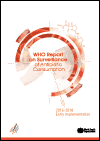
Resource | Publications,
This report presents 2015 data on the consumption of systemic antibiotics from 65 countries and areas, contributing to our understanding of how antibiotics are used in these countries. In addition, the report documents early efforts of the World Health Organization (WHO) and participating countries to monitor antimicrobial consumption, describes the WHO global methodology for data collection, and highlights the challenges and future steps in monitoring antimicrobial consumption.

Resource | Publications,
‘Taking stock: A decade of drug policy’ evaluates the impacts of drug policies implemented across the world over the past decade, using data from the United Nations (UN), complemented with peer-reviewed academic research and grey literature reports from civil society. The important role of civil society in the design, implementation, monitoring and evaluation of global drug policies is recognised in the 2009 Political Declaration and Plan of Action on drugs, as well as in the Outcome Document of the 2016 United Nations General Assembly Special Session (UNGASS) on drugs. It is in this spirit that the International Drug Policy Consortium (IDPC) has produced this Shadow Report, to contribute constructively to high-level discussions on the next decade in global drug policy.
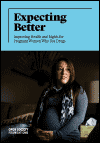
Resource | Publications,
Unfortunately, pregnant women who use drugs face highly stigmatizing and inaccurate perceptions from both health care providers and the public at large, negatively impacting the quality of their care and supportive services. This publication seeks to move beyond the myths and anxieties about drug use during pregnancy to recommend simple approaches to benefit and protect the health of both pregnant women and newborns.
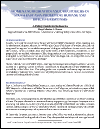
Resource | Publications,
In 2009, the United Nations Office of Drug and Crime (UNODC) produced a report assessing one hundred years of drug control since the 1909 Shanghai Opium Commission. The report identified and recognized the negative ‘unintended consequences’ of drug control policies: the creation of a criminal black market; the shift of policy focus from public health to law enforcement; enforcement in one geographical area resulted to diversion of illicit drug production to other areas; pressure on one type of drug led to the promotion of the use of other alternative drugs; and, the marginalization of and stigmatization against persons who use drugs.
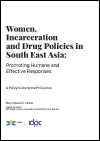
Resource | Publications,
In 2009, the United Nations Office of Drug and Crime (UNODC) produced a report assessing one hundred years of drug control since the 1909 Shanghai Opium Commission. The report identified and recognized the negative ‘unintended consequences’ of drug control policies: the creation of a criminal black market; the shift of policy focus from public health to law enforcement; enforcement in one geographical area resulted to diversion of illicit drug production to other areas; pressure on one type of drug led to the promotion of the use of other alternative drugs; and, the marginalization of and stigmatization against persons who use drugs.
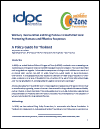
Resource | Publications,
In 2009, the United Nations Office of Drug and Crime (UNODC) produced a report assessing one hundred years of drug control since the 1909 Shanghai Opium Commission. The report identified and recognized the negative ‘unintended consequences’ of drug control policies: the creation of a criminal black market; the shift of policy focus from public health to law enforcement; enforcement in one geographical area resulted to diversion of illicit drug production to other areas; pressure on one type of drug led to the promotion of the use of other alternative drugs; and, the marginalization of and stigmatization against persons who use drugs.

Resource | Fact Sheets,
In September 2018, there were 954 new HIV antibody seropositive individuals reported to the HIV/AIDS & ART Registry of the Philippines (HARP). Nineteen percent (179) had clinical manifestations of advanced HIV infection (WHO clinical stage 3 or 4) at the time of diagnosis.

Resource | Publications,
This investment case describes how a stronger, more efficient and results oriented WHO can serve and guide governments and partners in their efforts to improve the health of their populations and to achieve Sustainable Development Goal 3.
WHO will achieve results: The five years to 2023 will determine whether the world will achieve the health- related SDGs. Early investment in WHO will keep the world on track towards SDG3 and the other health-related targets
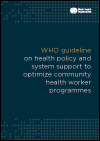
Resource | Guidelines,
The overall goal of this guideline is to assist national governments and national and international partners to improve the design, implementation, performance and evaluation of CHW programmes, contributing to the progressive realization of universal health coverage.
This guideline is primarily focused on CHWs (as defined by the International Labour Organization through its International Standard Classification of Occupations), but its relevance and applicability include also other types of community-based health workers. The recommendations of this guideline are of relevance to health systems of countries at all levels of socioeconomic development.

Resource | Publications,
This document is one of a technical series that supports the Global Conference on Primary Health Care, convened to renew commitment to Primary Health Care in light of Universal Health Coverage and the 2030 Agenda on Sustainable Development. This background document, the Operational Framework, and the associated technical documents are informed by reviews of the literature, 2018 WHO Regional Reports on Primary Health Care, country case studies on PHC, a literature reviews on and synthesis of lessons learned in PHC implementation over the last 40 years, a number of workshops with key stakeholders that agreed on a global roadmap, input from the International Advisory Group on Primary Health Care, public consultations, expert review, and thematic reports on key issues relevant to Primary Health Care.





